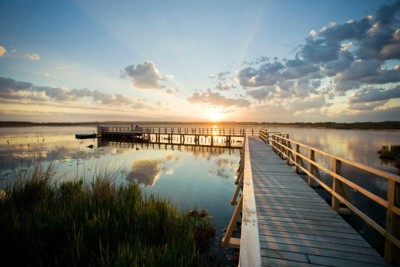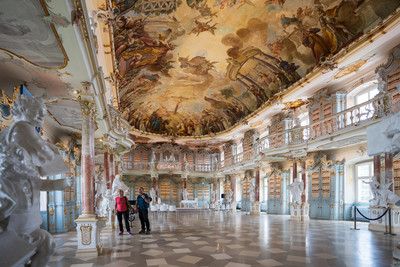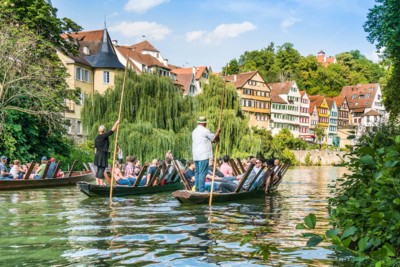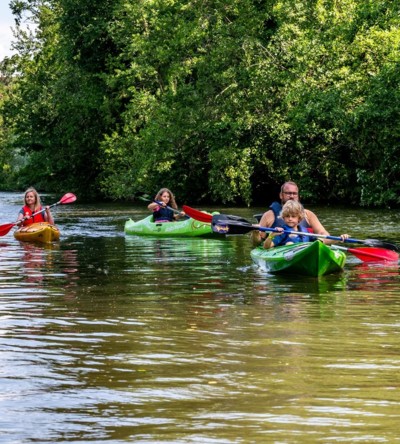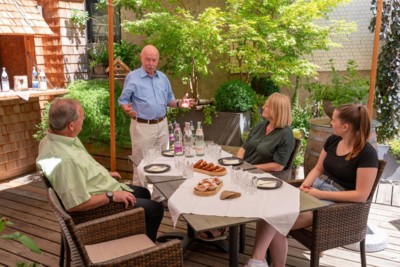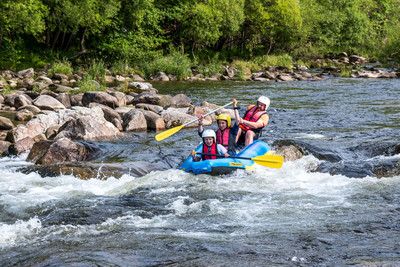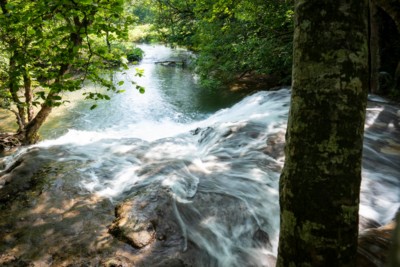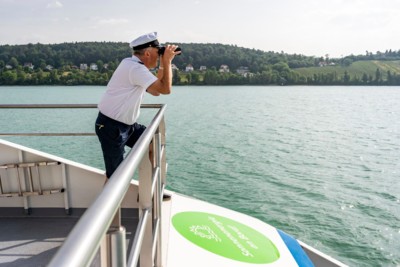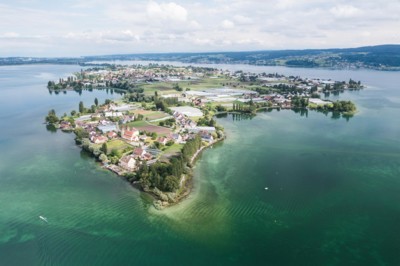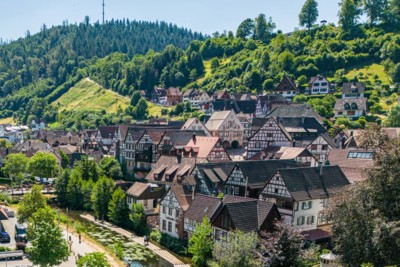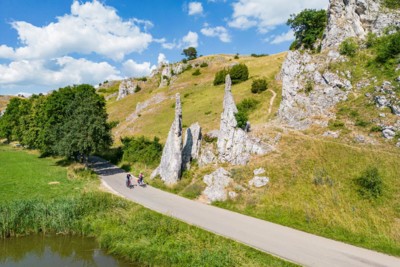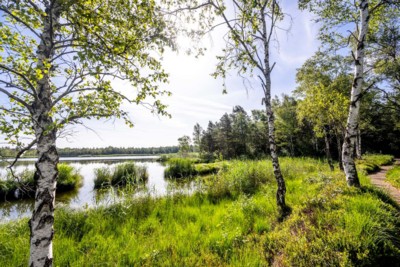Walking Along Old Canals and Water Systems
5 Calm Walks at the Upper Swabian Baroque Route
© Stadt Ochsenhausen


BW-Story - Hirsch & Greif
Hiking Along the Water in Southwest Germany
More than 50 baroque buildings line the Upper Swabian Baroque Route, one of the oldest cultural and scenic routes in Germany. The monasteries and abbeys not only boast magnificent architecture, but also feature old canals and clever water systems, which once were the lifelines of the monasteries. Today, there are many calm walks along their banks, including the following five:
 Krummbach Stream in Ochsenhausen
Krummbach Stream in Ochsenhausen
#1 Wonderfully Idyllic
Krummbach Stream in Ochsenhausen
Facts:
- Difficulty level: easy
- Length: 1.41 kilometres
- Duration: 0:25 h
- Start/finish: parking Krummbach
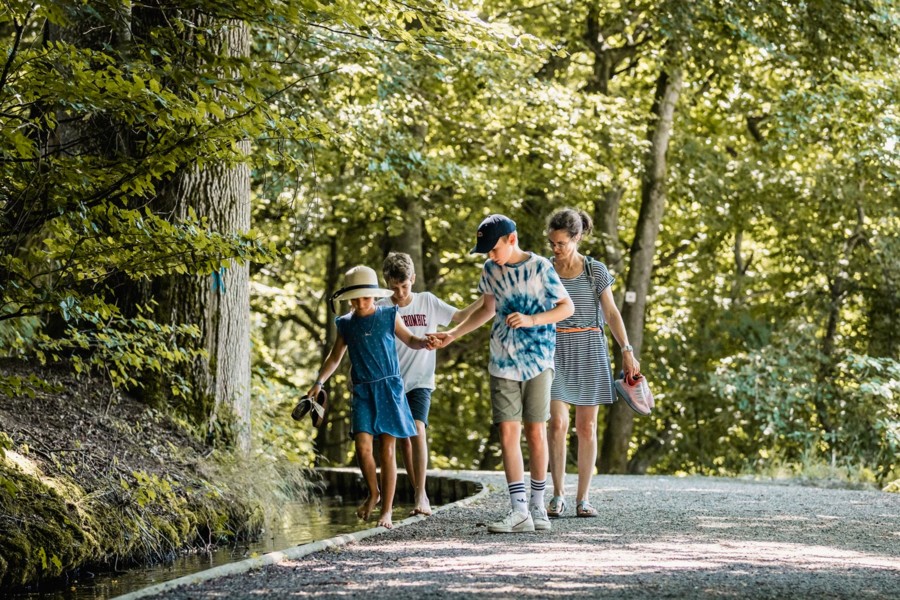
A few rays of sunshine pierce the canopy of mighty trees, the stream babbles gently. Insects hum, the church clock strikes a new hour. The outline of the nearby monastery can be seen through the trees. The canal systems built by the Benedictine monks at the Krummbach Stream at Ochsenhausen Monastery are particularly idyllic. Numerous interconnected watercourses and ponds once provided water and energy to the monastery, its brewery and its mill. That is the reason the monastery already had a central water supply in the Renaissance. At the same time, the canal system was used for irrigation, sewage disposal and fish farming. Due to its minimal gradient, the canal is an early masterpiece hydraulic engineering. To this day, the Krummbach Stream is a valuable water reservoir which provides the town of Ochsenhausen with the majority of its drinking water and feeds the heat pump that heats the monastery church in winter.
#2 On Peaceful Paths
Stiller Bach Stream in Weingarten
Facts:
- Difficulty level: easy
- Length: 6.08 kilometres
- Duration: 1:40 h
- Start/finish: parking Nessenreben Open-air Swimming Pool
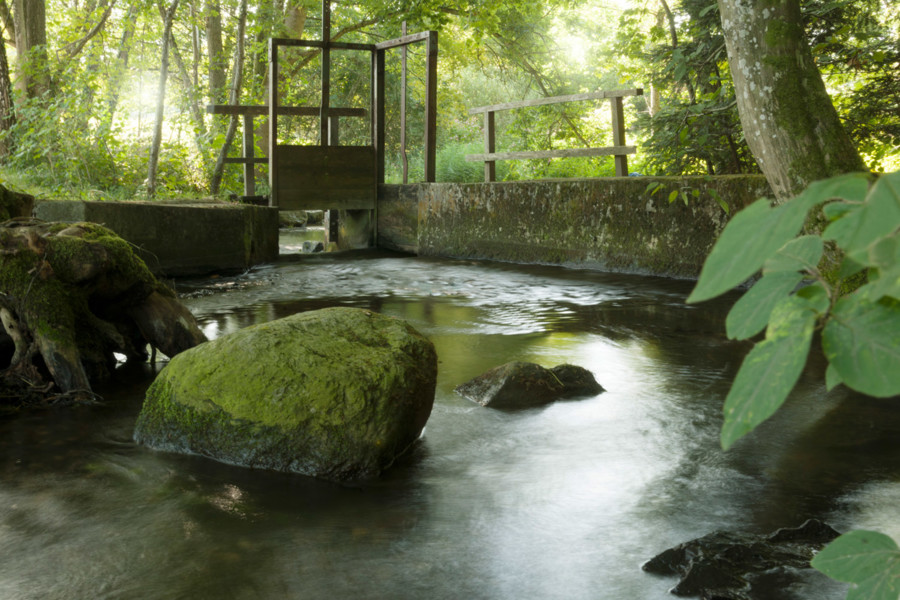
Weingarten is situated in the heart of the Upper Swabian cultural landscape. Weingarten Abbey, the largest baroque basilica north of the Alps, sits on a hill above the rooftops of the Guelph town. It has always been the town’s most famous landmark. And the abbey’s monks were impressive architects: in the 12th century they created an eleven-kilometre-long canal that connected natural streams and lakes, but also created new ponds. The canals are almost completely preserved. Today, they are lined by secluded pathways, including the footpath from Weingarten to the Rösslerweiher Pond, one of the oldest reservoirs in Europe. It is still used for fish farming, another relic of the Benedictine monks of Weingarten. If you want to find out more about the life of the monks, the origins of the Stiller Bach Stream and life in Weingarten, you can book a two-hour guided tour along the canal system.
 Fishpond Walk at Wald Monastery
Fishpond Walk at Wald Monastery
#3 Medieval High-Tech
Fishpond Walk at Wald Monastery
Facts:
- Difficulty level: easy
- Length: 4.94 kilometres
- Duration: 1:22 h
- Start/finish: Wald town hall
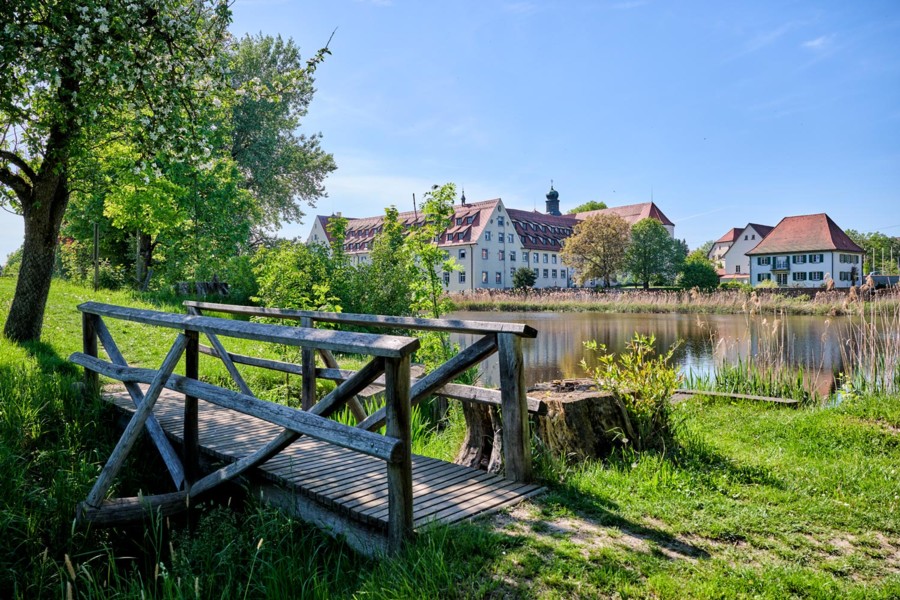
When Knight Burkhard von Weckenstein, a clerk to Emperor Frederick II, founded the Cistercian monastery in Wald for his two sisters Judita and Ita in 1212, those responsible for the order were faced with a major task: they had to provide the monastery with enough fish, as the Cistercians were once completely forbidden to eat meat. With a great technical skill, a total of twelve interconnected ponds were dammed so they could be used for fishing - a genuine medieval masterpiece. Today, information boards at the remaining ponds explain the technology and creation of this clever water system. There is a leisurely five-kilometre circular walk that links them all together, starting and finishing at the historical town hall in Wald. The monastery itself is also impressive: the walls and ceiling of the baroque parish church of are adorned with paintings by Meinrad von Au and stucco work by Andreas Schwarzmann.
#4 Where the Mill Wheel Once Turned
Mill Canal at Heiligkreuztal Monastery
Facts:
- Difficulty level: easy
- Length: approx. 1 kilometre
- Duration: 0:20 h
- Start/finish: Gate of the Heiligkreuztal Monastery
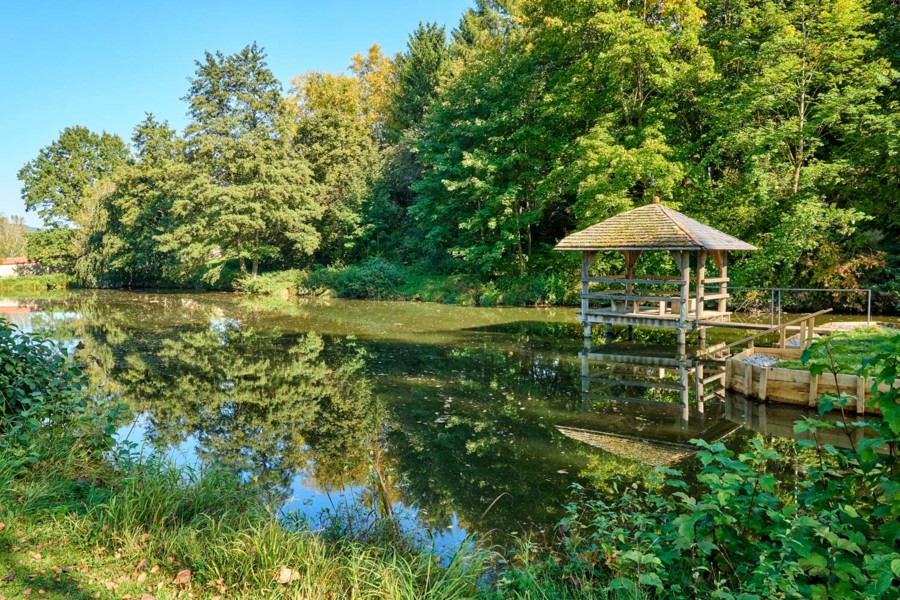
Heiligkreuztal Monastery in the town of the same name is the best preserved of the six Cistercian monasteries in Upper Swabia. Among the highlights of the abbey are the minster, with its choir window dating back to 1312 and its Baroque side altars, and the well-preserved historical mill. The was taken out of service in the first half of the 19th century but remains in place. Just a few metres south of the building is the mill pond, which provided the mill with the necessary water power via a canal. Today, the paths along the canals make for tranquil walks, perfect for a leisurely stroll to explore the history of the abbey complex.
 Mönchsroth Path
Mönchsroth Path
#5 Steeped in History
Mönchsroth Path
Mönchsroth Abbey monastery complex has been located at the confluence of the Rot and Haslach Rivers since 1126. Large parts of the medieval monastery were destroyed by fire. The building was reconstructed in the High Baroque style in just 18 years. As well as the fire, water has also characterized the area: until 1683, the monastery courtyard was crossed by a ‘deep, wide ditch’ through which the Mühlenbach, a tributary of the Rot, flowed. It supplied energy to the monastery mill. The mill was driven by a mill wheel on the north side of the building. In the 17th century, the monks built an underground canal for the mill through the monastery courtyard. The tannery, dye works, and sawmill were also run from this canal, which flows into the Haslach River. Nowadays, you can explore the whole area, including the other prestigious historical monuments and works of art in Rot, along the Mönchsroth Path. There are 23 information boards along the way providing interesting facts about the different buildings.
Special Tip:
Baroque Week
Event date: 10 to 18 August 2024
The Baroque era has left a great legacy of virtuoso music, art, and architectural treasures. It is clear that life was celebrated along the Upper Swabian Baroque Route! At least for those who could afford it. After all, most people back then lived a modest life as farmers, craftsmen, or servants. How did people live in the Baroque era? What was life like in the monasteries of Upper Swabia? What music did the nobility in the palaces listen to? Special guided tours, concerts in Baroque ambience, culinary excursions and much more allow visitors to take a look behind the richly decorated Baroque facades during the annual ‘BAROCKwoche’.
 More on Upper Swabia
More on Upper Swabia
Overview
More on Upper Swabia
Want to Browse More?
You Might Also Be Interested In

